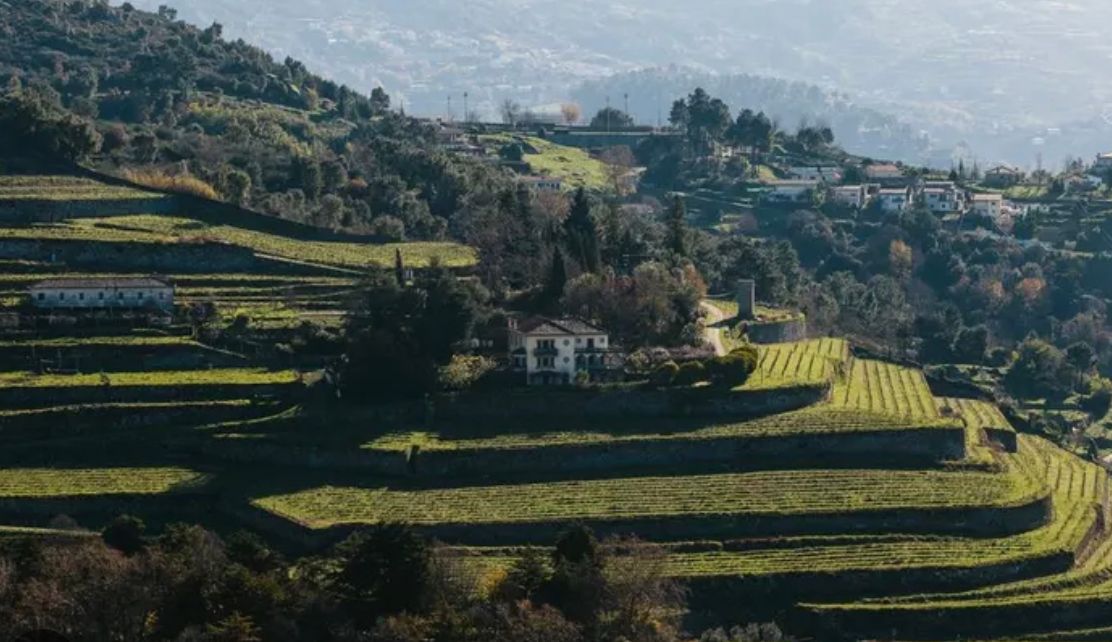Vinho Verde has been one of Portugal’s great success stories, perhaps its greatest. Its winning formula has been crisp, relatively low-alcohol white wines that sell for competitive prices and satisfy the thirst for straightforward, good-value and refreshing ‘fridge door’ wines.
However, at a recent masterclass hosted by Sarah Ahmed, The Wine Detective and Portuguese specialist, it was clear that success has encouraged producers to diversify and experiment with viticulture and winemaking for more premium bottlings.
While recognising the importance and value of high-quality blended Vinho Verde in the market, Ahmed was keen to stress that for independents, premium retailers and sommeliers, there is still much more to discover in a region that is embracing experimentation and discovery.
“In the last 20 years, there has been a growth spurt of boutique estates and micro-negociant winemakers, typically growers who used to sell their grapes to cooperatives or to negociants, who are now making their own wines. This means that Minho’s diverse terroir is being explored like never before,” Ahmed says.
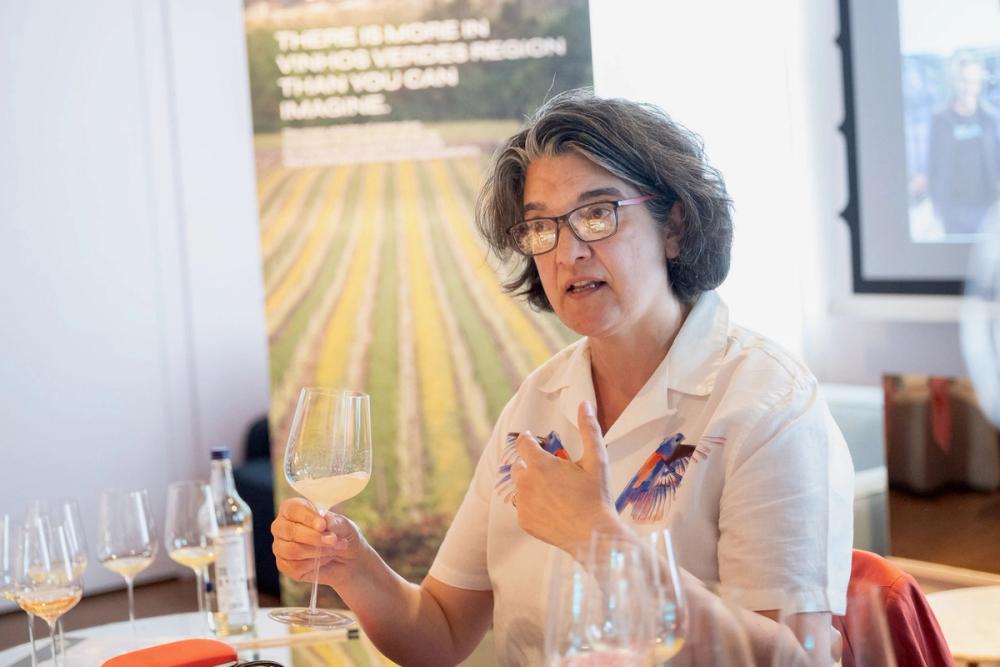
"Exciting to see winemakers introducing more character, more nuance into the wines," Sarah Ahmed
Exploring varietal Vinho Verde
At 17,000 hectares, the Vinho Verde DOC and Minho Vinho Regional designations cover a substantial amount of ground — about the same as Napa Valley. The Minho spans 200km from north to south. Around 96m litres of wine are produced each year, of which 87.3% is white, and almost 100 varieties are authorised for both Vinho Verde DOC and non-DOC wines from the Minho region.
In the last decade, Ahmed has observed “a marked trend in favour of single varietal Vinho Verdes which are often linked to sub-region.” These varieties are helping to build the profile of the sub-regions, following in the footsteps of Alvarinho, a speciality of Monção and Melgaço, and one of Portugal’s first varietal success stories in export markets.
Sub-regional diversity
Looking beyond Monção and Melgaço, Ahmed highlighted some up-and-coming sub-regions to watch, and their signature varieties:
Baião - the southerly home of Avesso, which, at 4% of plantings is currently a minor player in the overall region, but one that Ahmed is excited about. A “star varietal” is how she describes it, noting that it has only really come to prominence in the last ten years. High in acid, a little higher in alcohol than typical Vinho Verde from the north, Avesso often shows tropical and stone fruit flavours while remaining crisp and fresh.
Basto - this easterly, inland and markedly continental sub-region is the home to the obscure Batoca grape variety which is gradually being resurrected from old vines from just 15 hectares of plantings as of 2010 (Wine Grapes). Gouveio, perhaps better known as a Douro grape or Godello from Galicia, is also showing considerable promise here for broader, more textural and savoury wines that support barrel-ageing and bottle maturation to give a different style of Vinho Verde.
Lima - directly south of Monção and Melgaço, Lima runs from the coast to the Minho border and is most likely to be the sub-region that champions Loureiro, a variety that appears native to the region. What Alvarinho did for Monção and Melgaço, Loureiro could do for Lima. High acid, linear with brisk lime and orange flavours in youth, it can age very well in bottle.
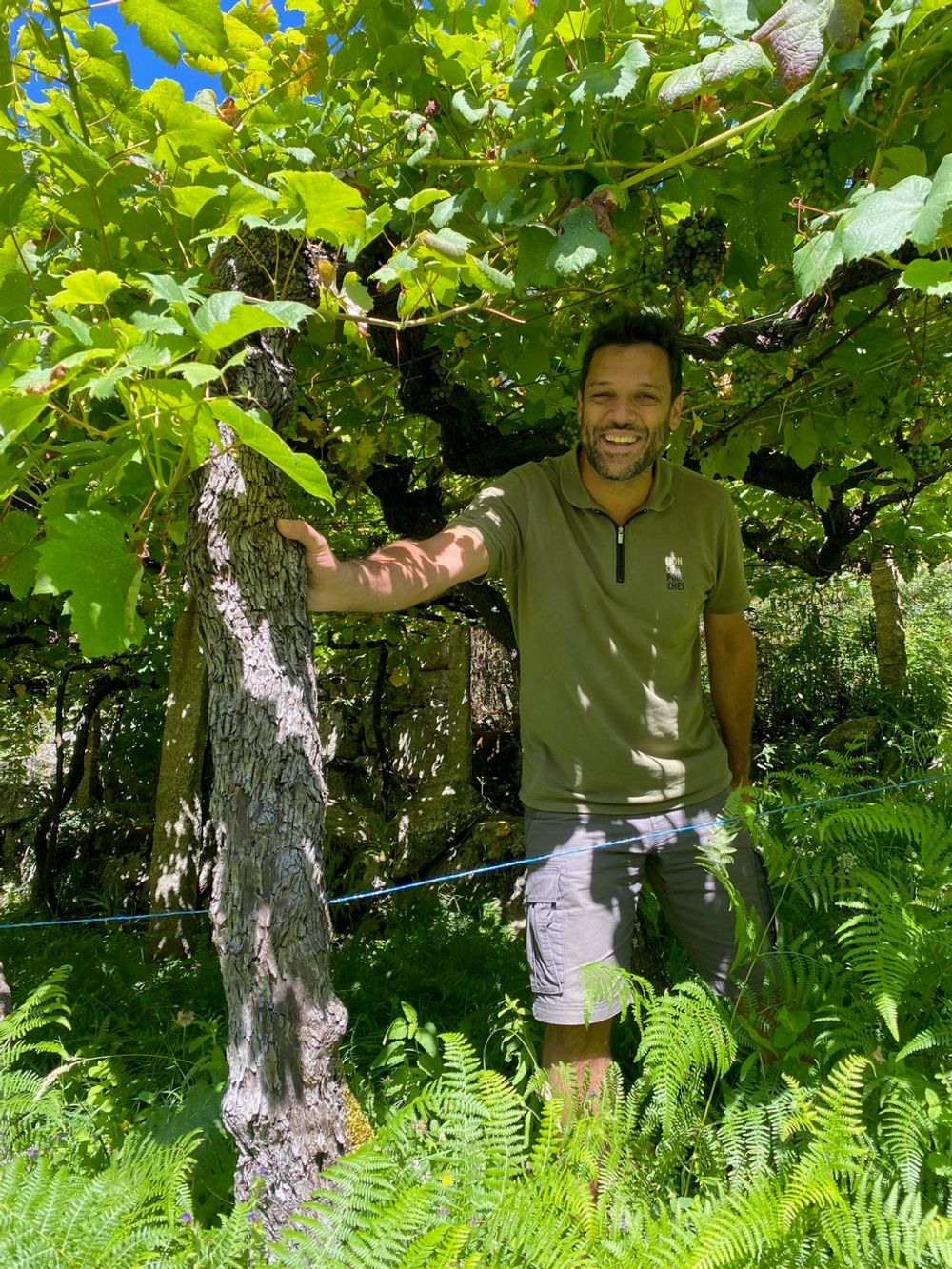
There is a strong interest in the old vine movement: Ramada old vines with Constantino Ramos in Juca Tinto vineyard ©Max Graham
Alternative viticulture
But it’s not all about varietal purity. Just as other regions are starting to hone in on varietal, back in Monção and Melgaço, the original ambassador for varietal Vinho Verde, traditional field blends are also being reassessed by small producers keen to focus on expression of site, and there is increasing experimentation with red varieties.
Although red wines only account for 3% of production, until the 1990s they were more widely produced than white wine in the region. The potential for a fashionably light red from Vinho Verde is clear and producers like Márcio Lopes from Pequenos Rebentos and Constantino Ramos are moving towards lighter, on-trend reds, often made from field blends and with low intervention principles, rather than the inky Vinhão which has proved difficult in export markets.
Connected to this, viticulture more widely is being reviewed with some producers taking a strong interest in the old vine movement and traditional pergola and tree-trained trellising systems. These training systems, however, are extremely labour-intensive and suitable only for the most boutique producers who can attend to each vine personally.
“We're talking super, super-niche,” Ahmed says, “but the region's young guns are exploring the quality potential of traditional plantings which is another element of the diversity of Vinho Verde that I think it's worth talking about.”
Ageing potential and food pairings
While Vinho Verde has mostly been seen as an easy-drinking picnic white in the UK market, João Paupério, market manager for the Vinho Verde Wine Commission, was keen to stress its food matching potential and ability to age.
As he pointed out, visitors to Portugal are often struck by the fact that Vinho Verde wines are commonly listed separately from other wines. This cultural practice marks the distinction between the classically ‘green’ (i.e. young) Verde wines and the non-green wines, often simply presented on a wine list under Branco and Tinto categories.
But there is an increasing interest in showing how well the Vinho Verde wines can age, both in terms of more oxidative and extended maturation at the winery, and in terms of bottle ageing, with wines such as Quinta do Ameal’s Loureiro (2012) and Quinta do Regueiro Maturado (2019) demonstrating ageing potential in different styles (see notes below).
Building on the theme of regional diversity, Paupério was keen to stress that “as wines mature, and as we move from the Atlantic west to the inland east, gaining more body, more structure in the wines, this translates into different food pairings.” His recommendations encouraged tasters beyond seafood and towards white and roast meats and cheeses for the fuller-bodied, matured wines, often from wineries further inland.
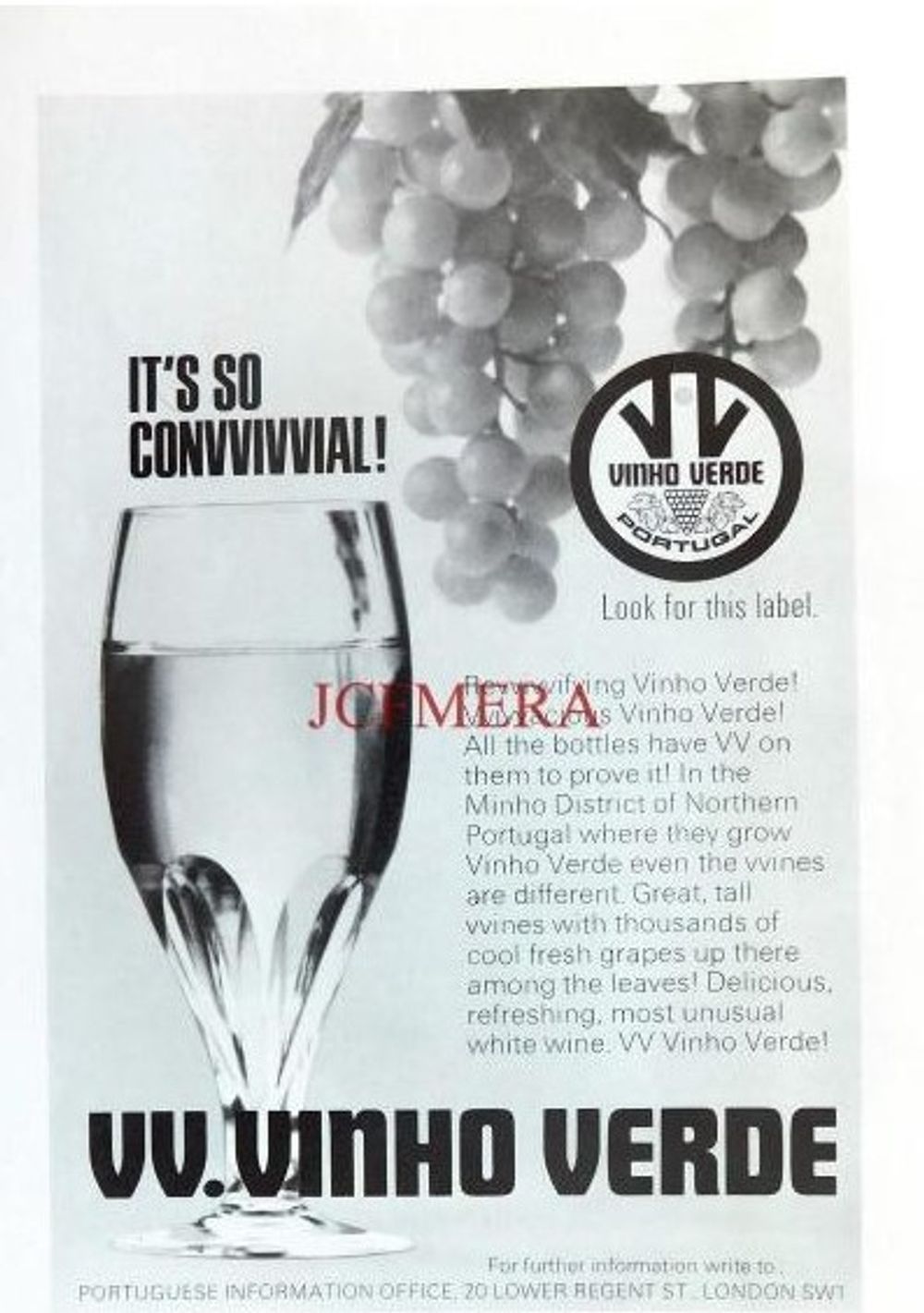
Vinho Verde has delivered in spades on its promise from the 1960s
A bright future
With a new generation of growers coming through, an increasing focus on terroir and vineyard expression and dozens of grape varieties that have yet to find their markets, Vinho Verde isn’t resting on its laurels.
As Ahmed says, “There all these exciting pockets of things going on, which I think it's really important to talk about for Vinho Verde. There was a point when, yes, everything got modern and a bit technical. You lose edge in the wines, you lose connection with tradition. What's exciting is seeing winemakers playing around with all of those facets and introducing more character, more nuance into the wines, and ultimately producing wines which have more interest and diversity.”
Ahmed shows a poster from 1967 from the marketing board for the region. The focus is on conviviality, freshness and easy pleasure. It’s a message that Vinho Verde has been delivering successfully for decades. But the commercial popularity of the region’s wines has encouraged diversity and experimentation among the new generation. While the classic, blended style is undoubtedly here to stay, Vinho Verde is a DOC that promises even more breadth and excitement for buyers in the years to come.
Masterclass Wines
Ahmed had selected a range of wines to demonstrate the trends highlighted above, based on travels and tastings in the region in November 2023. Nine of the 12 wines were based on a single grape variety, and the 12 encompassed sparkling, still, white, red and rosé variations.
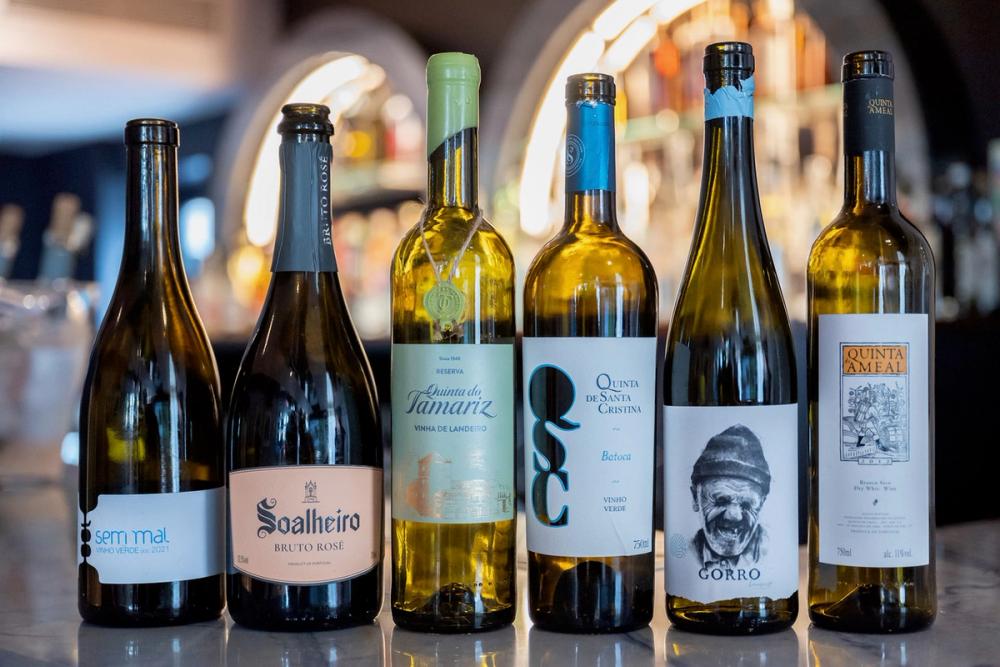
Sem Igual, Sem Mal 2021
Azal, Arinto
This tastes like someone has just dropped an ice cube down your back. A low intervention white made with natural yeasts and no malo, it’s dry with electrifying acids and crab apple, white bread and fresh lemon juice flavours through to the finish. Extreme but certainly an expressive example of a different style, this slightly cloudy wine is probably less suited to fine dining and more to some home-shucked oysters on a hot day. 10% abv
Importer: Element Wines
Soalheiro Brut Rosé
Alvarinho, Touriga Nacional, Pinot Noir
Soalheiro made its first sparkling in 1995 and yet this is a category with little traction in the UK, despite gaining DOC status as long ago as 1999. This is a traditional method, Extra Brut made in a refined, skillful style that would please any palate and would sit well on a wine-by-the-glass list as a point of difference. Dry and crisp with peach and delicate strawberry fruit. 6g dosage. 12.5% abv
Importer: Raymond Reynolds
Quinta do Tamariz, Vinha de Landeiro 2022
Alvarinho, Arinto, Loureiro
This estate has been bottling since 1928, so can hardly be considered new wave, but this was, as Ahmed said, “a serious dry white” with more phenolics and weight of fruit than classical Vinho Verde, with yellow apple and grapefruit and a riper, fuller texture. 13.5% abv
Importer: Portuguese Vinhos
Quinta de Santa Cristina, Batoca 2023
Batoca
Batoca is a highly localised speciality of the Basto region in the most easterly, inland region, but it charmed the room with its tropical fruit, peachy palate and gentle texture. Quinta de Santa Cristina has 0.3 hectares of old vines which have been utilised to increase plantings to 1 hectare, but the total plantings of Batoca were just 15ha in 2010. 12.5% abv
Importer: OPS Wines
Portugal Boutique Winery, Gorro 2022
Loureiro
From the westerly coastal sub-region of Lima, this was picked as an example of the micro-negociant trend that Ahmed was highlighting, as well as the potential of Loureiro. Pink grapefruit, wax and petrol here with some quince and apple noes on the palate. Complex, distinctive, definitely not run-of-the-mill. 12.5% abv
Importer: unrepresented
Quinta do Ameal 2012
Loureiro
Taken over in 2019 by Esporão, Ameal has long been a champion of Louriero, and its 2012 showed just how promising this variety can be, and how well-placed it is to follow Alvarinho as a major quality grape in the Minho. This was smoky, concentrated, for all the world like a top Riesling, with great acidity, length and notes of yellow grapefruit, green plum and lime chutney. Stony, intense, exciting — at just 11% abv. All stainless steel and just six months on the lees. This vintage is no longer available, but newer vintages are in the UK. 11% abv
Importer: Hatch Mansfield

Quinta da Raza, Vinha de Lamelas 2022
Gouveio
A young, terraced vineyard on schist soils – unusual for the Minho – gives the fruit for this compellingly savoury white. Mallows, yellow apples, a hint of peach, then wax, pastry, macadamia nuts, with lees giving depth and an integrated savoury undertow. A strong, white Burgundy alternative, this has bright acidity, a stony texture and great length. 13.5% abv
Importer: Raymond Reynolds
A&D Wines, Quinta de Santa Teresa 2021
Avesso
Dried pineapple, quinine and lots of acidity, then some spiced apple and nutmeg that give the illusion of oak. Really radically different from the usual Atlantic-styled Vinho Verde from Monção e Melgaço, this really does show a different face of the Minho. Pungent and intense and very long. 12.5% abv
Importer: Marta Vine & Graft Wine Company
Quinta de Santiago & Mira do Ó, Sou Alvarinho 2021
Alvarinho
We travel 200km back north from the previous wine to Monção e Melgaço. Lemons, modishly reductive, green apples – a stylish, contemporary white with some restrained oak and light savoury character. Nuno Miro do Ó selected the fruit from Santiago’s vineyard, then fermented it naturally in old oak. 13.2% abv
Importer: Graft Wine Company
Quinta do Regueiro, Maturado 2019
Alvarinho
Another Alvarinho from Monção e Melgaço, but further inland and at higher elevation, this was made in a more oxidative style with battonage, giving honey and cereal notes alongside the signature acidity of Alvarinho. A distinctly different take on the grape.
13%
Importer: OPS Wines
Quinta de Covela, Rosé 2023
Touriga Nacional
A modern, crisp, cool-fermented Touriga Nacional with refreshing, ripe cherry and watermelon fruit and a clean finish.
12.5%
Importer: unrepresented
Aphros Wine, Ouranos 2020
Alvarelhão
First released in 2018, this is a low intervention, tangy, savoury red with lots of herby whole-bunch character and pleasantly lean tomatoey fruit. Pale and chillable, this is in a markedly different style from the inky, traditional Vinhão-based Vinho Verde reds of the region, but represents a very on-trend style. All stainless steel fermented, this is natty, but clean. 11.5% abv
Importer: Les Caves de Pyrene
